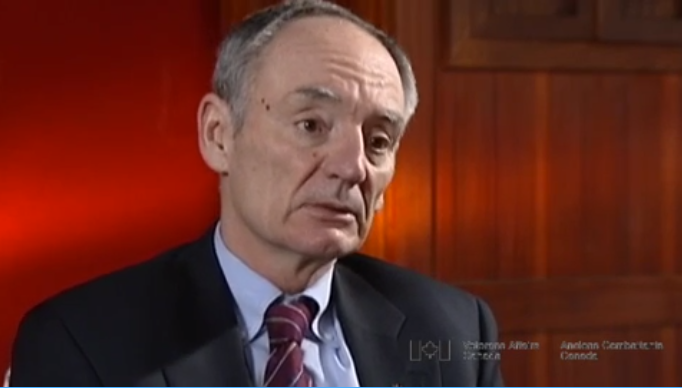We would operate very quietly
Heroes Remember
We would operate very quietly
Transcript
Description
Mr. Murray describes passive surveillance of Soviet missile submarines off Bermuda.
Lawrence Edward Murray
Mr. Murray was born in Stratford, Ontario, on June 6, 1947. Strongly influenced by family and friends who had joined the Navy, he entered officer training at HMCS Carleton base in Ottawa. Following that, he began his progression through the rank echelon, starting on the west coast aboard the HMCS Fraser as the Navigation Officer. Once on the east coast, he joined the crew of HMCS Algonquin as her Combat Officer, then became Executive Officer or Second in Command aboard HMCS Athabascan. Mr. Murray then moved to HMCS Iroquois as her Commanding Officer. He then rose to the position of Squadron Commander, 1st Canadian Destroyer Squadron. During his service, the Canadian Navy was actively involved in both NATO / Cold War ( primarily surveillance of Soviet submarines ) and Fisheries Patrol activities. He also led a rescue mission off the Grand Banks, saving the entire crew of a disabled merchant ship during a hurricane. After leaving the Navy, Mr. Murray pursued a career in the Canadian Public service, and is currently the Deputy Minister of Fisheries and Oceans. He resides in Ottawa, Ontario.
Meta Data
- Medium:
- Video
- Owner:
- Veterans Affairs Canada
- Duration:
- 3:46
- Person Interviewed:
- Lawrence Edward Murray
- War, Conflict or Mission:
- Canadian Armed Forces
- Location/Theatre:
- North Atlantic Ocean
- Battle/Campaign:
- NATO and Fisheries Patrol
- Branch:
- Navy
- Units/Ship:
- HMCS Iroquois
- Rank:
- Squadron Commander
- Occupation:
- 2nd Vice Admiral
Related Videos
- Date modified:






